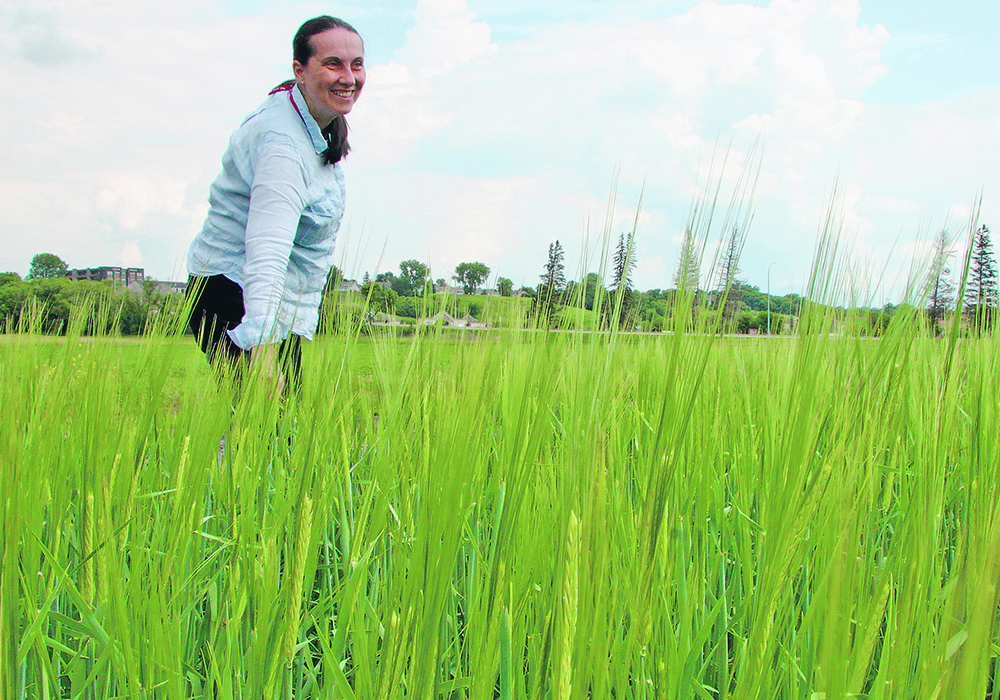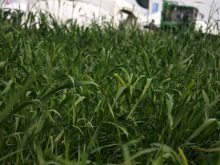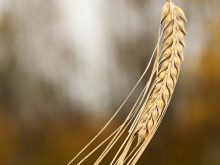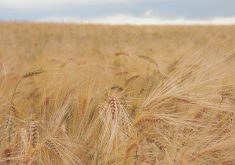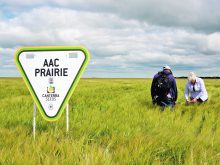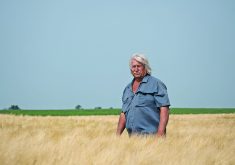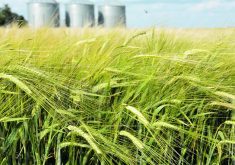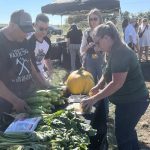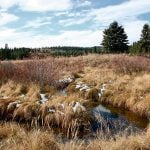BRANDON — Most Canadians have a happy place in the summer months.
For some, it’s a garden on a Saturday morning. For others, it’s sitting on a boat with a beverage in hand.
For Ana Badea, her happy place is the source of that beverage.
On a sunny Wednesday in late June, Badea walked into a plot of barley at the Agriculture Canada research centre in Brandon. The conditions were not great, as 70 millimetres of rain had fallen the day before. The soil around the plots was the consistency of thick gravy.
But Badea didn’t seem to mind.
She smiled and laughed several times while bending down to touch the 25-centimetre tall plants.
“I’m the happiest in the field with my plants … They don’t talk back,” said Badea, a barley breeder with Agriculture Canada in Brandon.
She grew up in Romania and worked at the Agriculture Canada research centre in Lethbridge for eight years before moving to Brandon several years ago to join the barley breeding program.
If she’s happy while slogging through a muddy field, it suggests that Badea truly enjoys her work, which can be demanding and complex.
Developing new varieties of barley is more complicated than it is for other crops, mostly because the grain goes into multiple markets. It’s used for malt, feed and food. Those end users have different expectations from barley.
“There are more than 20 parameters for malting quality that I have to look at,” Badea explained, including things like protein and germination. “All those, they have to be right on point.”
She must also consider dozens of other issues when designing a new barley, including the broad categories of disease, agronomics and quality.
“If you don’t meet all those three (criteria), you don’t pass.”
Of those three, diseases of barley consume a large portion of Badea’s time and energy, especially fusarium head blight. FHB is a fungal disease of small grains, like wheat, barley and rye, and can be a massive problem during wet growing seasons on the Prairies.
One species of the fungus, fusarium graminearum, causes most of the headaches for the barley industry. When it infects the barley head, it produces a mycotoxin called deoxynivalenol, better known as DON.
In the brewing industry, a tiny amount of DON in malt barley can taint an entire batch of beer.
“(It) can end up impacting on the beer in terms of gushing. Just like in the way if you shake a bottle of beer up, you open it and it explodes, that can happen without shaking it if the DON levels are too high in the original malt product,” Peter Watts, managing director of the Canadian Malting Barley Technical Centre in Winnipeg, told canadahomebrews.ca.
“So, understanding how to mitigate DON growth and understanding this disease better and the impact it can have on our final products is very important for the industry.”
For decades, Canadian plant breeders have studied genes in barley that may provide resistance to fusarium. Those efforts led to varieties like AAC Connect, which has moderate resistance to FHB and less accumulation of mycotoxins in the kernels.
But, despite searching the globe, scientists have not found a barley gene that provides full resistance.
“That doesn’t exist, to our knowledge, for fusarium,” said James Tucker, a barley genomics expert and plant pathologist who works with Badea in Brandon.
“This silver bullet has been looked for by many scientists because fusarium is a global problem. People in the U.S., China and other places have looked for this too.”
A large group of genes, possibly 100 or 200, likely combine to provide partial resistance to FHB. So, barley breeders like Badea must carefully select parents for a cross and hope the offspring have slightly improved resistance to the disease.
Selecting the parents is a large part of Badea’s job. She looks at a huge amount of data from barley plots across Western Canada and travels across the Prairies to visually inspect the plants.
“The crosses we’re making are informed crosses. I take the time to assess the parents myself,” she said, while sitting just outside her office at the Brandon centre, a building covered in glass with hundreds of south-facing windows.
“Some of the information comes from the computer…. However, each summer I make a point to visit as many sites as possible. The preparation I do, until I decide to make a cross, is very intense…. And I dedicate quite a bit of my efforts towards that.”
This sort of traditional plant breeding can produce a new barley with improved FHB resistance.
However, Badea is also taking another approach to the problem. She hopes to harness the power of endophytes.
Endophytes are bacteria and fungi that live inside a plant. In some cases, the organisms exude chemicals that are beneficial for the plant.
“Extremely unusual and valuable organic substances (can be) produced by these endophytes that are sources of novel chemistry and biology to assist in helping solve not only human health, but plant and animal health problems also,” says the Montana State University website.
Scientists around the globe are trying to use endophytes to boost crop production. They include University of Guelph researchers who are studying microbes that may help corn pull more nutrients from the soil or the atmosphere.
While standing next to the FHB barley nursery in Brandon, a field with more than 14,000 rows of different barley treatments, Tucker explained that the different varieties do contain different endophytes.
“They (the plants) all look the same…. But inside of them are so many different genes that could be interacting with these (endophytes),” he said. “How do the genes of the varieties … interact with the endophytes? It’s super-complicated.”
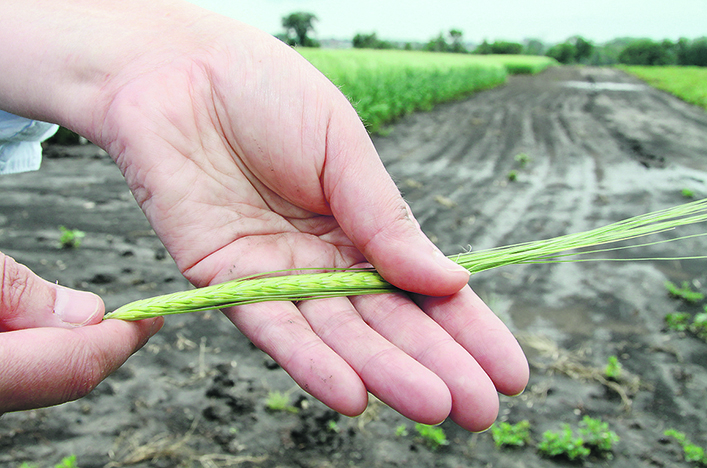
Tucker, Badea and their team have collected roots, stems and kernels from dozens of barley varieties at different stages of crop development. The goal is to find microbes that combat FHB.
If those microbes are in the harvested grain, then the seed might pass the beneficial endophytes to the next generation of barley.
In an ideal world, Badea could take a barley with FHB fighting endophytes and cross it with a commercial variety. That may produce an offspring with superior FHB resistance, which comes from the endophytes inside the plant.
Another option is to isolate the beneficial endophyte and design a biocontrol product that could be sprayed on the barley, Badea said.
“It gives tolerance or protection or could enhance whatever (chemical) the plant would produce.”
Finding ways to solve the FHB riddle is just a piece of Badea’s daily routine. She also dedicates a portion of her breeding duties to food barley. The grain is loaded with beta glucans, a healthy and soluble fibre that helps lower cholesterol and manages blood sugar levels.
Barley also contains vitamin B and other beneficial compounds.
But few Canadians consume barley except in the form of beer.
“I’m a big, big advocate for hull-less barley for food. It’s something I really enjoy,” Badea said.
“It drives me nuts when … it doesn’t have the place (in the diet) that it could have.”
But when she’s feeling down or needs a break, Badea does have a place of refuge at the Brandon research centre. Just outside her office, she has an 18-inch wide Zen garden where she can rearrange rocks and manicure the sand with a tiny rake.
If that doesn’t work, there is a nearby greenhouse and plots of barley to visit south of the research centre.
Walking past a series of larger plots, with signs indicating the names of newer varieties (AAC Synergy, AAC Prairie and others), Badea recited the history of each cultivar, their traits and what they could mean for Canada’s barley industry.
She is convinced that these varieties and all the earlier work by retired and current scientists have established a solid foundation for future research into barley.
“We’re at a good place, right now … but there is much more work that needs to be done.”


